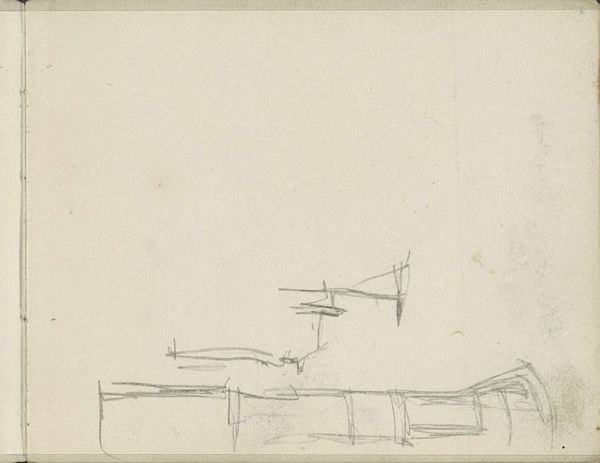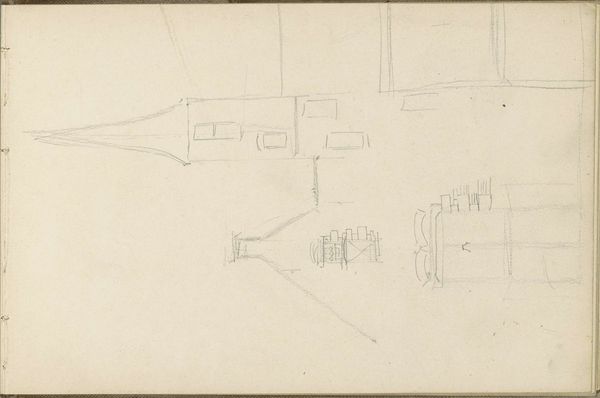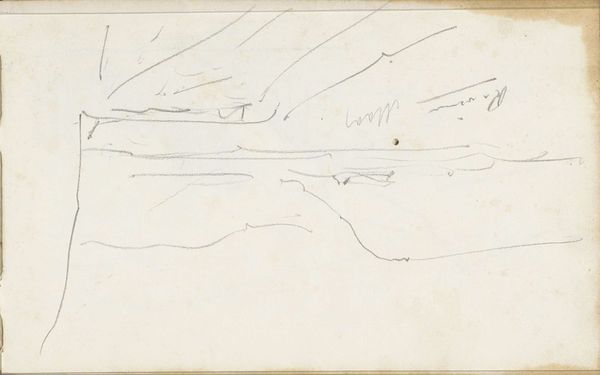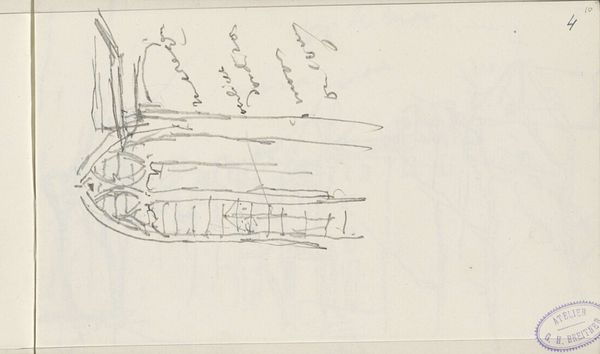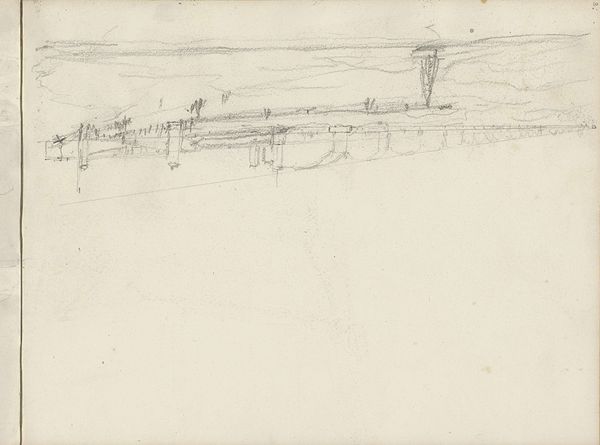
drawing, pencil
#
drawing
#
landscape
#
pencil
#
realism
Copyright: Rijks Museum: Open Domain
Curator: Well, hello there! I find myself quite drawn to this piece; it is "Boats on the Meuse near Liège," a pencil drawing by Johannes Tavenraat, dating from around 1840-1841. Editor: Immediately I’m seeing ghostly impressions; the composition, though minimal, hints at vastness. It is almost like looking at an antique photograph slowly developing, an echo of reality trying to form. Curator: Exactly! And isn't it fascinating how he captures so much with so little? A few lines, a touch of shading, and suddenly we are standing on the banks of the Meuse. The pencil work is deft but reserved; what do you think about the balance and structure he established using landscape as a genre? Editor: The skeletal rendering evokes the early days of industry, of course, but that's just what jumps out right away... those raw angles feel almost violent interrupting nature’s curve; or, maybe they show just the human imposition. A network connecting industry through waterways to new economic zones—there are few indications here besides basic symbolic communication but this speaks volumes to human development, I believe! Curator: It almost anticipates a grittier, industrial age! In terms of pure aesthetics, there’s an honest clarity, in capturing fleeting observation. I'm taken, too, by Tavenraat’s ability to find an almost profound poetry. Editor: Agreed! But that starkness might serve as the artwork’s unique form; instead, it is a statement! It also feels modern, in some sense; and that tension— the whisper of something profound—creates, as the picture gains age—something really touching and profound here. It feels old, and also utterly today. Curator: Absolutely; Tavenraat makes use of an essential minimalist hand to take a landscape, with only sketches and scribbles, but to evoke a feeling of history. A snapshot of past in motion. Editor: Thank you for illuminating this fascinating sketch.
Comments
No comments
Be the first to comment and join the conversation on the ultimate creative platform.

